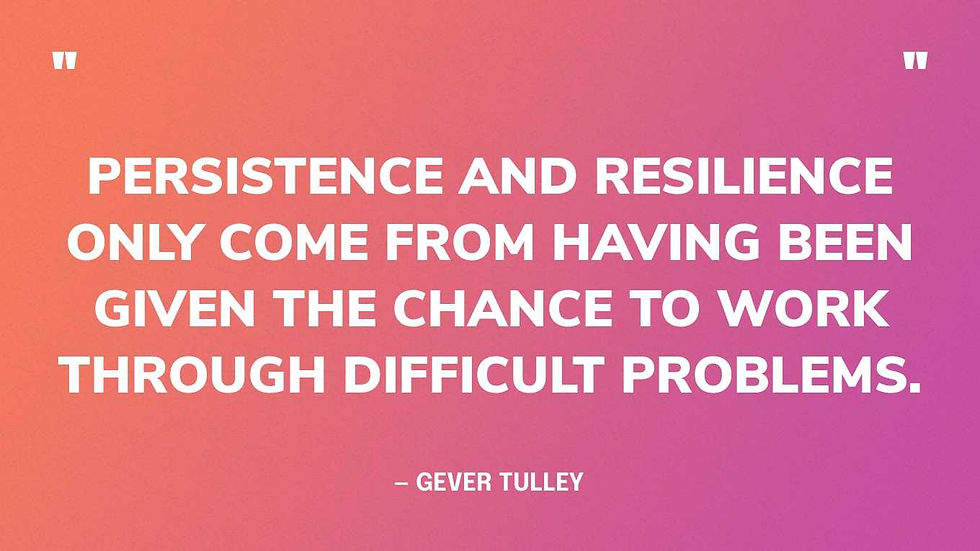Sept. 29, 2024: Resilience
- Judy
- Sep 29, 2024
- 3 min read
Defined as the ability to withstand and recover quickly from difficulty, resilience has become a new buzzword in education. Yes, education seems extremely susceptible to buzzwords and trends. This focus though, came not from academic research, but from psychological circles. With national trends of emotional difficulties in children rising over the last decade or so, there is now a great deal more research and data available.
Grit. Persistence. Growth mindset. These are all terms that are now tossed around in educational circles, as the research shows that strength in these areas translates to stronger academic growth. It makes sense, since traits like resilience allow students to deal with failure and challenges in positive ways and to continue to move forward.
During my school author visits, I talk a great deal about perseverance, (a critical aspect of resilience) especially as it relates to my journey as an author. When sharing the story of my first book and how the path from idea to traditional publication was a 7-year process, I hope to instill the importance of not giving up. Of not expecting that the pathway to a goal will be smooth.
As a teacher of Gifted students, I worry a great deal about my students’ ability to deal with failure and struggle. Many high achieving students begin their academic careers catching on quickly and learning almost effortlessly. In the early elementary years, they do not have to put a great deal of effort in to achieve great results. Many experience very little academic difficulty in the first few years of school. So, they do not typically have to learn how to be resilient.
How then, do you teach resilience? You purposefully put students in situations where they will struggle academically, and then you help them develop strategies for coping. This is much harder than it seems. One of the hardest things for teachers (and parents) is refraining from jumping in to “rescue” a struggling child. There are even names for these types of parenting. Helicopter parenting. Snowplow parents.
Even teachers, who are trained to plan for and nurture student success, have a very hard time not intervening when things get tough. Uncovering the positive side to struggle is not easy or natural.
It requires acknowledging the failure or obstacle. (ownership)
It requires identifying the specific terms, concepts, strategies, or ideas that are not working. (analysis)
It requires understanding that your value is not tied to your success in this one endeavor. (confidence)
It requires the freedom to experiment and try a variety of different approaches with minimal negative consequences. (autonomy)
It requires the creativity to envision different approaches and outcomes. (imagination)
Some of these are easy to put in place. Some, not so much.
Sometimes life unexpectedly jumps in with turns that teach us resilience whether we want to learn it or not. I am thinking of my 12-year-old granddaughter, who at 7 years old, was diagnosed with Type 1 Diabetes. Her entire life changed in an instant.
I am thinking of a student of mine who last year, at 9 years old, unexpectedly lost her father. Or a student at our school, now in 4th grade, who in 2nd grade was involved in a car accident that left her in a wheelchair.
Resiliency is a life-skill. And like all skills, it can be taught and strengthened.





Comments